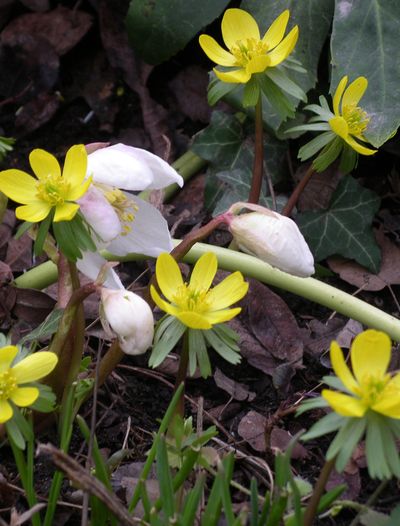Old rules don’t apply to gardening season this warm

Hold your shovels folks: At least one piece of local folklore is out the window this year.
The general rule has always been that you shouldn’t plant warm season crops like tomatoes, peppers and corn until the snow is off Mica Peak, the peak southeast of Spokane. This year, the snow is already gone – and it’s too early to plant those crops. So in lieu of this marker for the garden season, hold off until late May to plant anything that is frost sensitive.
The mild weather is moving up some of the early garden chores though. The soil has warmed up enough that lawns are starting to green up. If you have a crabgrass problem, now is the time to be applying a pre-emergent control on the lawn to prevent seedlings from sprouting. It is also a good time to apply an organic lawn fertilizer to provide nutrients to the grass as it starts growing. Your second application should be toward the end of May and the last one in mid-September.
The weather has probably warmed enough to begin pruning and cleaning up roses. Leave the mulch cover around grafted roses on for a couple of more weeks just in case we get one last winter storm. On tea, grandiflora and miniature roses, trim down winter- blackened canes to green wood and then thin to the strongest three or four well-spaced canes. This will help the plants generate a well-balanced set of new canes. Shrub, floribunda and old garden roses will need only enough pruning to remove dead wood, crossing branches and to shape the plant. Most of the pruning on these will come after they bloom. Climbing roses benefit from the removal of any dead wood and having exceptionally long canes trimmed back. Wait until the first part of April to fertilize to reduce potential damage from a sudden late cold snap.
Do a first pass weeding on garden beds and boxes. Chickweed and early grasses have already reared their annoying heads in my garden. After weeding, either mulch the area with shredded leaves or pine needles or periodically run a rake over the beds to disturb any germinating weeds. I will weed my vegetable garden boxes and then cover them with a two to three-inch layer of shredded pine needles. When it is time to plant, I merely clear a line in the mulch and plant my seeds. It is very easy to pull the few weeds that come up in the narrow band of soil in the rows. This might keep the soil a little cooler than is ideal but it saves a lot of work.
Hellebores are in bloom now and will continue blooming for a good month or more. As they finish blooming, you can gently remove the oldest tattered leaves to make room for the new ones. Resist moving the plants until fall as they don’t tolerate their roots being disturbed when they are actively growing.
Daffodils and tulip are up but they will wait for a little more warmth before they bloom.